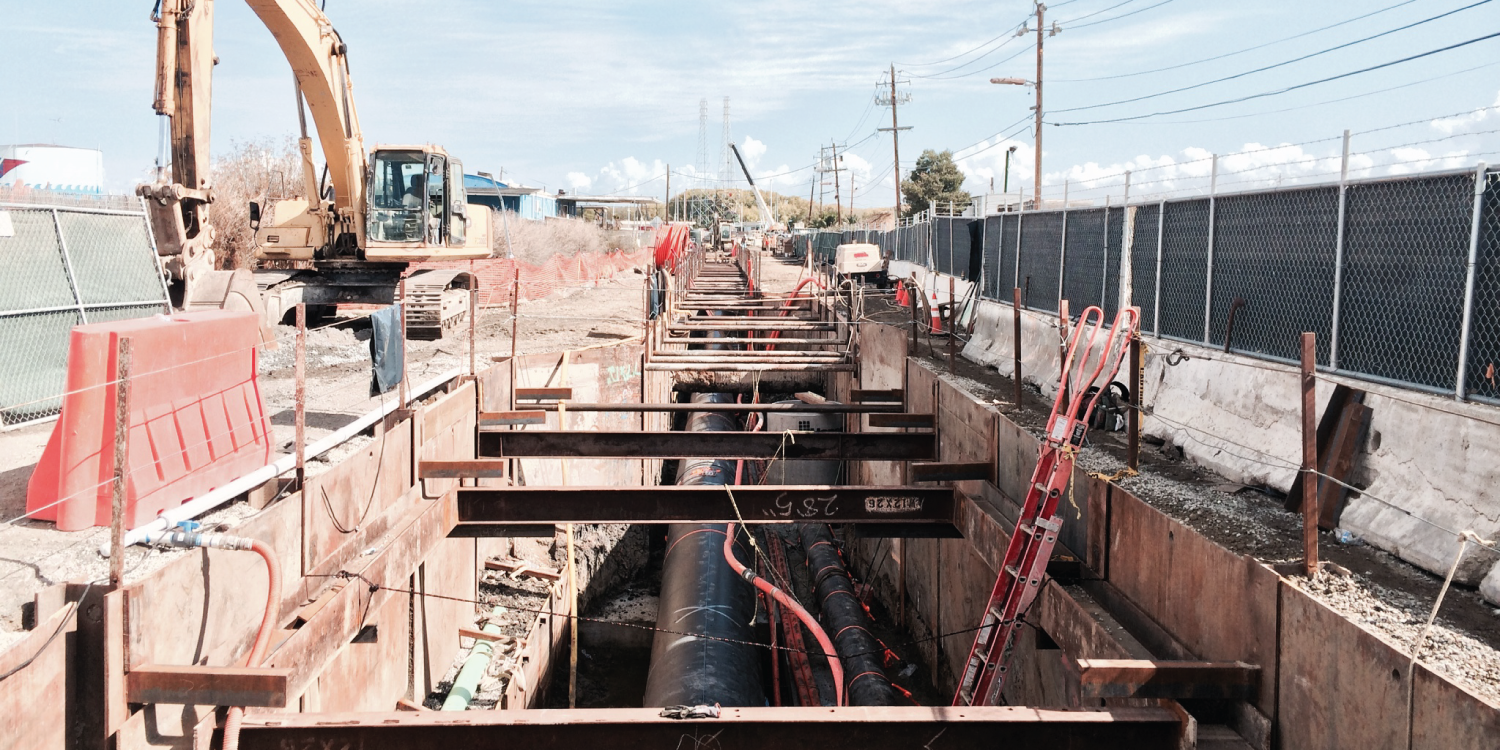CE&G performed a geotechnical exploration for the proposed new 48-inch forced sewer main near Bair Island Slough in Redwood City. Duties for the project included historical research of the project area, collection of previous exploration data, coordination with local and state permitting agencies, coordination with multiple consulting and development agencies, coordination with the drilling subcontractors, field investigation, laboratory testing selection, and report development. The field investigation included 4 over-water exploratory borings utilizing a barge-mounted drilling rig. The barge drilling rig was launched in coordination with the state and local agencies and private residents of the area and transported several kilometers along the San Francisco Bay creeks and waterways to the exploration location. The drilling operation lasted four days. Drilling consisted of rotary wash borings, containment of the drilling fluid and cuttings in drums, coordination with the environmental testing and removal of the drums, and locating and marking the explorations with the use of buoys. The exploration required constant adjustment for tidal influences to maintain the near-continuous sampling interval required for up to 92.5 feet below the sediment floor of the San Francisco Bay margin soils.
The project required the force main to be installed below a marina. Based on the materials encountered in the overwater borings, CE&G worked with the consultant team to identify an appropriate tunneling horizon for the trenchless portion of the project. A tunneling horizon between 30 and 50 feet below site grade was selected. To construct the force main, one jacking and two receiving shafts were constructed. Two rectangular shafts were constructed using sheet piles and one 36 foot diameter shaft was constructed using secant piles.
CE&G provided earth pressure diagrams for the shafts which varied in depth between 42 and 49 feet deep and which were successfully constructed adjacent to San Francisco Bay. The diagrams included lateral earth pressure and hydrostatic pressure. Sheet piles and secant piles were installed. The shafts were then advanced by removing earth and water within the pre-installed shoring. For the sheet pile walls, bracing was added as the shaft was advanced.













